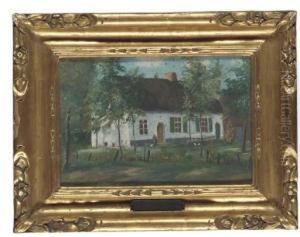J. Van De Velde Paintings
J. van de Velde, often recognized as Jan Jansz van de Velde III, was a distinguished Dutch Golden Age artist and engraver, born in 1597 in Haarlem, Netherlands. His work is emblematic of the flourishing period of Dutch art, where emphasis on detail, light, and everyday life played a crucial role in the visual narratives created by artists of the time. Van de Velde was part of a family deeply entrenched in the arts; his father, Jan van de Velde II, was a well-known teacher and engraver, indicating that artistic skill and appreciation were likely ingrained in him from an early age.
Van de Velde's oeuvre is primarily known for its exquisite still life paintings, which often depicted the ephemeral beauty of objects such as flowers, musical instruments, and sumptuous meals. These works not only showcase his remarkable skill in rendering textures and surfaces but also reflect the period's fascination with vanitas themes—symbolic reminders of the transience of life and the inevitability of death. This thematic choice resonates with the broader cultural and philosophical preoccupations of the 17th century, a time when the Dutch Republic was at the height of its economic and artistic power, yet simultaneously engaged in contemplation of moral and existential questions.
He moved to Rotterdam in the early 1620s, where he spent the majority of his career. His shift to Rotterdam marked a period of significant productivity and creativity, contributing to the city's burgeoning reputation as a center for the arts. Van de Velde's work during this time continued to evolve, demonstrating not only his mastery of still life but also his ability to capture the subtleties of light and shade, a skill that would influence future generations of artists.
Despite his contributions to the Dutch Golden Age of painting, J. van de Velde remains a somewhat enigmatic figure, with many aspects of his life and career still subject to scholarly research and debate. He died in 1641 in Enkhuizen, a town in the Netherlands, leaving behind a legacy that continues to be celebrated for its depth, beauty, and historical significance. His paintings are preserved in many prestigious museums around the world, where they continue to enchant and inspire viewers with their intricate detail and profound thematic underpinnings.
